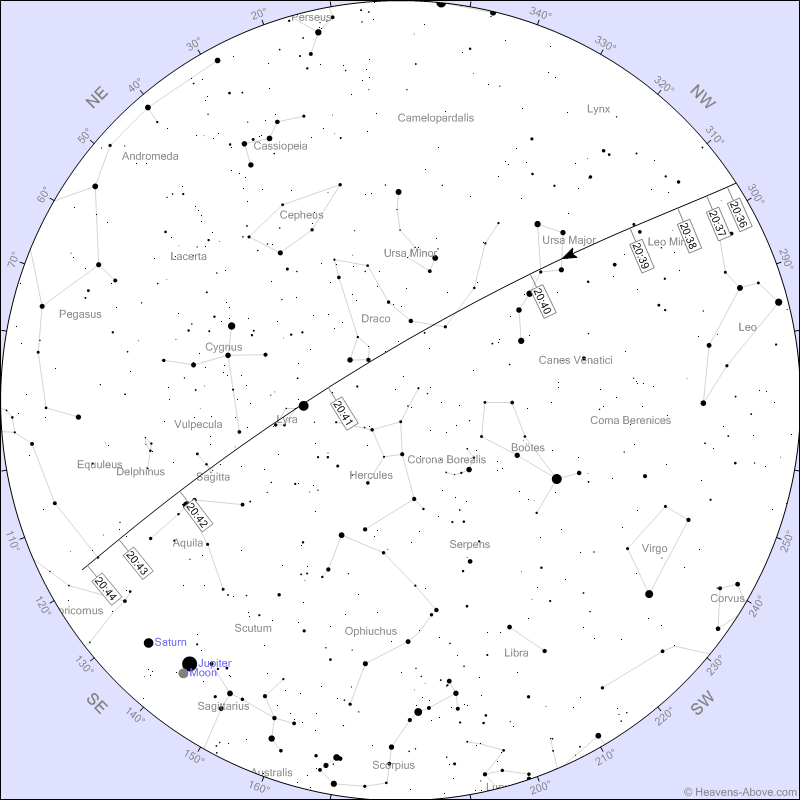- Alpha Centauri
- Sirius
- Epsilon Eridani
- 61 Cygni
- Procyon
- Tau Ceti
- Epsilon Indi
SKYWATCH: July 31 - August 6, 2020
On July 31 the Sun will rise at 5:22 a.m. and set at 8:06 p.m, giving us 14 hours and 34 minutes of daylight, a 52 minute decrease since the summer solstice. On August 6, the Sun will rise at 5:36 a.m. and set at 7:57 p.m, providing us with 14 hours and 19 minutes of daylight. The Sun is passing through the constellation Cancer the Crab this week.
At week's beginning the moon will move through the waxing gibbous phase. The moon will be full on August 3rd. The full moon rises around sunset and sets at sunrise. Common names for the August full moon include the “Green Corn Moon,” the “Barley Moon,” “Fruit Moon” and “Grain Moon.” These names all relate to the later summer season and our preparations for the harvest. The moon will then pass through the waning gibbous phase toward the end of the week. The moon reaches the last quarter phase on August 11th. This year, the Harvest Moon falls on October 1st.
On August 2nd, be certain to find the waxing gibbous moon close to Jupiter and Saturn in the early evening eastern sky. They will remain together throughout most of the night and will set together in the pre-dawn western sky.
Mercury rises around 4:03 a.m at week’s beginning and will be visible briefly in the eastern pre-dawn sky before being obscured by the intensifying twilight, Mercury reached greatest western elongation on July 20th and will now appear to move closer to the Sun. Venus, as always the brightest planet, currently occupies the Taurus constellation and will rise at 2:18 a.m. on July 31st. The optimal time to view Venus is between 3 - 5 a.m, when the brilliant planet remains visible against the pre-dawn glow. It was at its maximum brightness of the year on July 10th. Though slightly dimmer now at magnitude -4.3, Venus will still be 15 times brighter than Sirius. Mars rises by 11:02 p.m. As it is currently located almost precisely on the celestial equator within the constellation Pisces, Mars rises nearly due east and will remain an eastern evening sky object through the rest of the night. At magnitude -0.9, Mars is now brighter than any night sky star except Sirius, which is not currently visible. Mars will continue to rise earlier and grow brighter as it approaches its next opposition on October 13, 2020. Jupiter reached opposition on July 14th and will now slowly move away from Earth and grow gradually dimmer. However, at magnitude -2.6, Jupiter outshines all the stars and planets, save Venus. It will rise in the eastern sky at 7:30 p.m. at the beginning of the week and will set just before 4:30 a.m. Jupiter reaches opposition again on August 19, 2021. Saturn reached opposition on July 20th and attained its maximum brightness at that time. Saturn is also now moving away from Earth and will become dimmer as a consequence. However, at magnitude 0.1, Saturn remains brighter than Vega and will rise at 7:54 p.m. at week’s beginning. Both Jupiter and Saturn are currently passing through the constellation Sagittarius the Archer.
Comet NEOWISE is about to fade to black. Currently dimmer than magnitude 5.0, NEOWISE appears as a faint smudge within the constellation Coma Berenices. Now, it has begun its long, arduous trek toward the outer solar system. The comet is due to reappear in our skies in approximately 67 centuries.
A flow of solar wind is expected to strike Earth on August 2- 3rd. Its arrival could precipitate an aurora event in mid to high latitudes. We advise you to consult the web-site www.spaceweather.com for updates on this possible aurora event.
The brightest fly over of the International Space Station occurs this week on August 1st. The ISS will rise at 8:35:18 p.m. and attain its maximum altitude of 79 degrees at 8:40:47 p.m. At that time the ISS will shine at magnitude -3.7, more than three and a half times brighter than Jupiter! The International Space Station then will vanish into the shadow at 8:44:13 p.m. During this passage, the ISS will appear to slice through the Big Dipper’s bowl, graze Draco the Dragon’s head and pass almost directly in front of Vega, the brightest star in the Summer Triangle.
